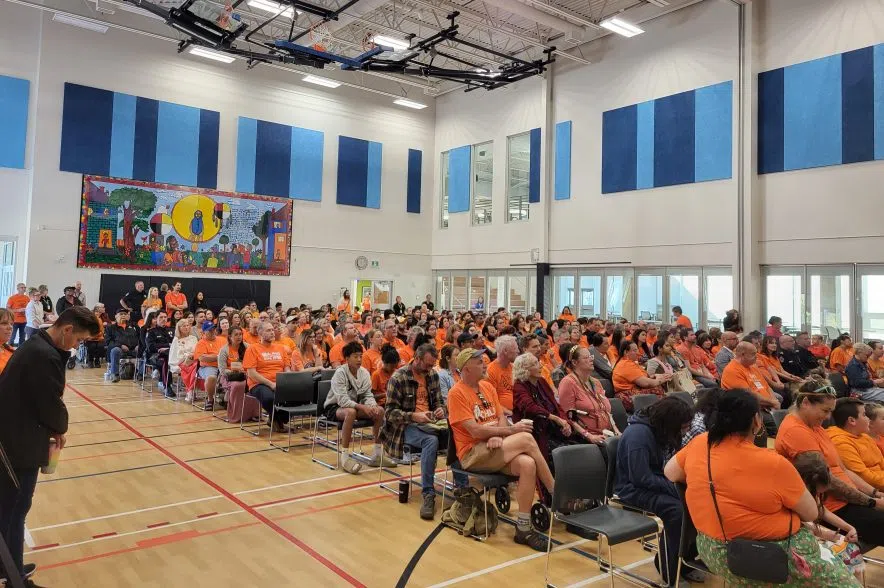Hundreds of people gathered at Regina’s mâmawêyatitân centre for the National Day for Truth and Reconciliation.
The vast rec room was filled with people wearing bright orange, sitting in attendance to watch and listen to the speeches and performances.
Five blankets were hoisted on display near the walls of the room, all of them made by Cree artist Merle Buffalo.
Read more:
- A heartbreaking history: How Saskatchewan students learn about residential schools
- Why do people wear orange on Truth and Reconciliation Day?
- Culture celebrated on National Truth and Reconciliation Day in Saskatchewan
Buffalo was asked to create the blankets in the spirit of fostering discovery, exploration, reflection and reconciliation.
Buffalo herself was forced to attend a residential school for seven years when she was a child, and said embarking on the project helped her start her own healing journey.
“It started to bring back memories that I had suppressed over the years, from residential school, but it was also a healing thing for me because it helped me deal with the pain and the loneliness that I was going through and it answered a lot of questions as to why my parents were the way they were, why my grandparents were the way they were, why I never knew anything about my culture or who I was as a native woman,” Buffalo said.
She said she is still on the path toward healing and wants the same for others as well.
During the program, Buffalo detailed her own experiences of being sexually, physically and emotionally abused while attending Gordon’s Residential School.“
People will try and deny it, but I’m living proof that these atrocities did happen,” she said.
“When they look at my blanket, I hope they have the courage and the strength to go on that journey that I’m on, because that’s the only way you’re going to have peace and happiness in your heart and in your life.
Buffalo credits the elders in her life who helped her retain her culture, allowing her to go on to teach her kids and grandkids.
Merle implores others to educate themselves on the history of the residential school system.
The event was hosted by the Equity, Diversity and Inclusion Network.
Fawn Redwood is one of the event planners. She said the day was centred around recognizing the past and taking the steps to move forward.
“The biggest thing is education. So read a book, watch a movie, go out to events, and listen to the speakers,” Redwood said.
“It’s very important to actually take the time to listen to the people who experienced residential schools.
Seven generations of people went through it, and the oldest, of course, are no longer here. The youngest ones could be about 35 years old.”











